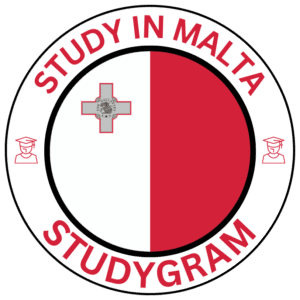
Overview of the 58th ESHG Conference in Milan
The European Society of Human Genetics (ESHG) hosted its 58th annual meeting in Milan, Italy, from 24 to 27 May. The event gathered genetics researchers, clinicians, and industry representatives from across Europe to discuss recent findings, emerging technologies, and collaborative opportunities. Among the highlights was a showcase of research conducted at the University of Malta (UM), underscoring the university’s active role in addressing rare genetic disorders and complex ocular diseases.
University of Malta’s Presentations on Rare Disorders
Idiopathic Hypogonadotropic Hypogonadism (IHH) – Genetic Etiology
Dr. Clayton Axiak and Prof. Rosienne Farrugia led a poster presentation on the genetic roots of IHH in a Maltese cohort. IHH is a hereditary condition that impairs puberty onset or progression due to disrupted hormone signalling. Their study analysed 17 patients, identifying a range of pathogenic variants across multiple genes, including novel mutations not previously reported. The findings emphasize the heterogeneity of IHH and support the notion that personalised genetic screening can improve diagnostic precision.
Key insights include:
- Identification of previously unknown mutations that may contribute to disease severity.
- Confirmation that common IHH genes such as KISS1R and FGFR1 remain pivotal, but rarer loci also play a role.
- Potential for targeted hormonal therapies once specific genetic defects are identified.
Researchers noted that these data could lead to earlier intervention for patients with unexplained infertility, ultimately reducing the psychosocial burden associated with delayed puberty.
Diabetic Retinopathy – RNA Expression Changes in Lens Epithelial Cells
Dr. Muhaiyo Bartolo presented a complementary study exploring the molecular alterations in lens cells from patients undergoing cataract surgery. By comparing RNA expression profiles between individuals with mild and advanced diabetic retinopathy, the team uncovered stage‑specific gene expression changes.
Key observations include:
- Up‑regulation of inflammatory pathways in late‑stage retinopathy.
- Altered expression of genes involved in oxidative stress response.
- Potential biomarkers that could predict progression or therapeutic response.
These results provide a deeper understanding of how diabetes drives structural changes in the eye, informing future investigations into protective strategies for retinal health.
Collaborative Efforts and Funding Behind the Research
Both studies benefited from several funding sources:
- Malta NGS Project (R&I‑2012‑024) and the Genomics of Rare Diseases grant (I21LU04) supported genomic analysis infrastructure.
- Two TESS scholarship grants (MEDE 281/2020/7 and MEDE 281/2020/10) facilitated doctoral research and conference travel.
- ESHG fellowship awarded to Dr. Axiak provided additional mentorship and networking opportunities.
- RIDT overseas conference grant assisted in covering conference fees for early‑career researchers.
Collaborative teams included faculty from the Department of Applied Biomedical Science, Centre of Molecular Medicine and Biobanking, and the Faculty of Medicine and Surgery, illustrating UM’s interdisciplinary approach.
Implications for Clinicians and Researchers
For clinicians working with patients who present with reproductive or ocular complications, these studies reinforce the value of genetic testing. A clear, evidence‑based pathway can be established: identify candidate genes, confirm pathogenicity, and select personalized therapeutic options. For researchers, the data underscore the importance of studying locally relevant cohorts, as genetic diversity can influence disease presentation and response to treatment.
Key takeaways:
- Integrate detailed genomic screening into the diagnostic workflow for IHH.
- Utilize molecular findings to develop early biomarkers for diabetic retinopathy.
- Foster trans‑disciplinary collaboration to accelerate discovery at the intersection of genetics and ophthalmology.
- Invest in robust bioinformatics pipelines to streamline data analysis and interpretation.
Future Directions and Collaboration Opportunities
UM plans to expand the IHH study to include functional assays that can validate the impact of newly discovered variants. The diabetic retinopathy project will move into a longitudinal cohort design, assessing how gene expression profiles change over time and with therapeutic intervention.
Researchers interested in joining these initiatives can contact Prof. Rosienne Farrugia for more details on ongoing projects and potential collaboration avenues.
Further Reading and Resources
- UM Research Portfolio
- Master’s in Biomedical Research
- Clinical Genetics Services
- Scholarships for Genetics PhD Students
Take Action
Are you a researcher or clinician looking to deepen your expertise in rare disease genetics or ocular genetics? Explore UM’s research programs and resources available to support your work.
Advance your research with University of Malta resources.
Feel ready to collaborate? Submit a proposal today and partner with a leading academic institution that is actively producing cutting‑edge research.
Collaborate with UM Research Teams.
For students aspiring to pursue advanced studies in genetics, schedule a consultation to learn how UM can support your academic journey.

